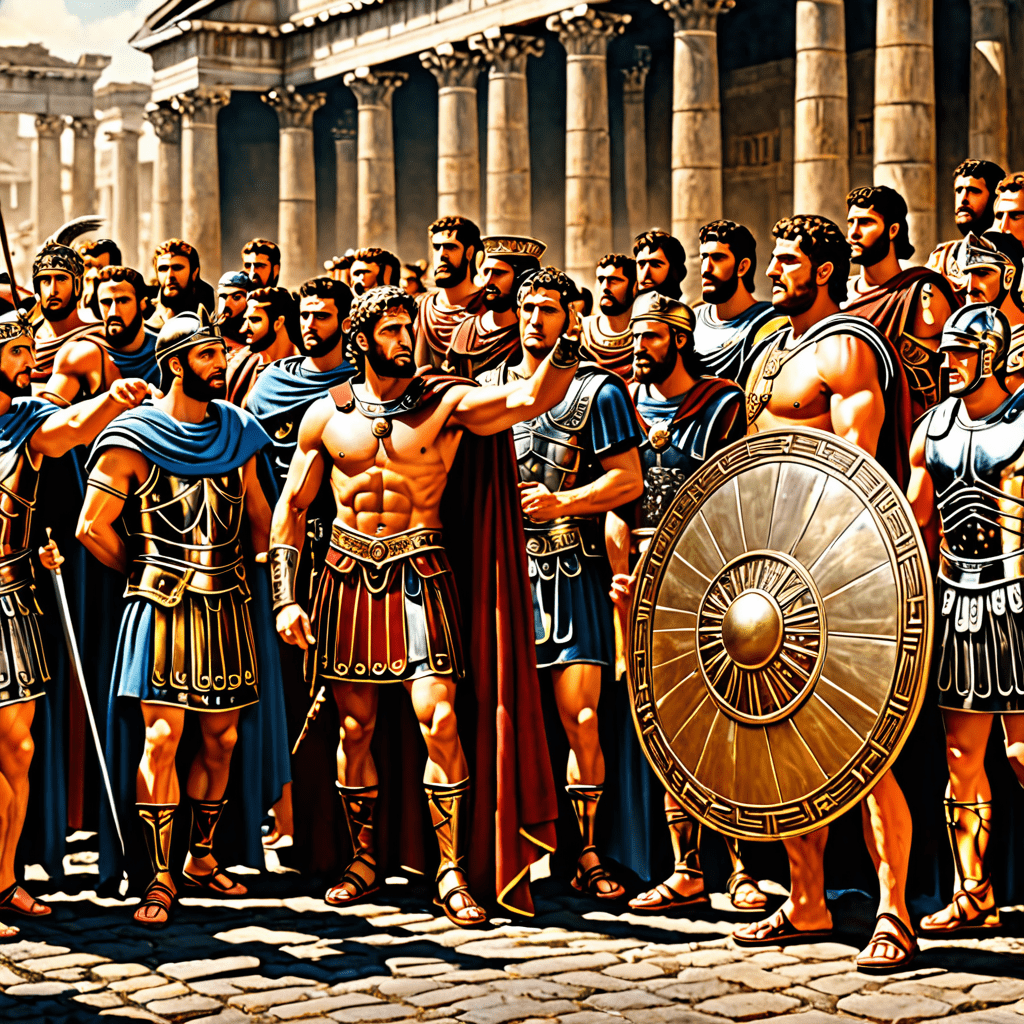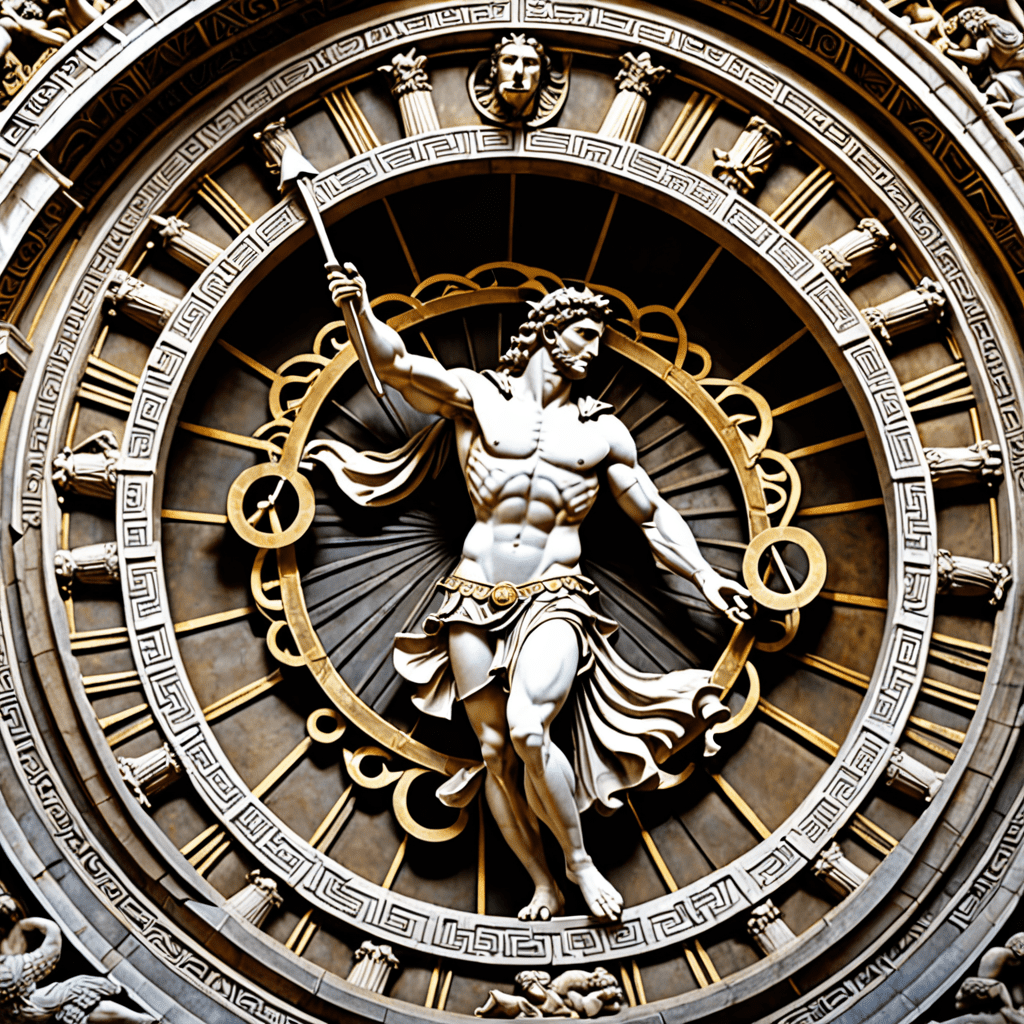Ancient Deities and Their Connection to Nature: A Mythological Perspective
I. Introduction to Ancient Deities
Ancient deities are the divine beings worshipped by early civilizations, representing various aspects of life, nature, and the cosmos. These figures were integral to the cultures that revered them, serving as intermediaries between humans and the forces of nature. They were often attributed human-like qualities, emotions, and behaviors, making them relatable to followers.
Nature held immense significance in mythology, as it was both a source of sustenance and a powerful force that could bring destruction. The elements of earth, sky, water, and fire were personified through deities, each representing the duality of creation and destruction inherent in the natural world. This article explores the intricate relationship between ancient deities and natural elements, revealing how these mythological figures reflect humanity’s connection to the environment.
II. The Interplay Between Nature and Mythology
The interpretation of nature varied widely across ancient societies, with each culture developing its own narratives and symbolism. Nature was not merely a backdrop; it was a living entity imbued with spiritual significance. For example, natural phenomena such as storms, earthquakes, and seasonal changes were often attributed to the actions of gods.
Nature emerged as a central theme in mythological narratives, where stories of creation, destruction, and rebirth were common. These tales often served to explain the world around them, providing a framework for understanding environmental changes. Furthermore, environmental factors significantly influenced the characteristics of deities. For instance, cultures in arid regions may have worshipped gods associated with water and rain, while agrarian societies revered deities linked to fertility and harvest.
III. Earth Deities: Guardians of the Land
Earth deities are considered the guardians of the land and are often associated with agriculture, fertility, and the nurturing of life. Prominent earth deities from various cultures include:
- Gaia (Greek): The personification of the Earth, Gaia is often depicted as a nurturing mother who gives life to all beings.
- Prithvi (Hindu): Revered as the Earth goddess, Prithvi is associated with fertility and sustenance, embodying the physical world.
- Pachamama (Inca): The earth goddess of the Andes, Pachamama is revered for her role in agriculture and the fertility of the land.
The symbolism of earth deities often extends to agriculture and fertility, reflecting the reliance of ancient societies on the land for survival. Myths illustrating their connection to natural landscapes abound, such as the tale of Gaia giving birth to the Titans, who represent various aspects of the natural world. These narratives emphasize the importance of respecting and nurturing the earth, as it sustains all life.
IV. Sky Deities: The Celestial Influence
Sky deities hold significant importance in mythology, often associated with the heavens, weather phenomena, and celestial bodies. Notable sky deities include:
- Zeus (Greek): The king of the gods, Zeus is associated with the sky, lightning, and storms, wielding power over the heavens.
- Ra (Egyptian): The sun god, Ra represents light, creation, and the cycle of life, journeying across the sky each day.
- Tlaloc (Aztec): The rain god, Tlaloc is connected to water, fertility, and agriculture, highlighting the importance of rainfall for sustenance.
The connection between sky deities and weather phenomena is profound, as they are often invoked for rain, storms, and other climatic events. Myths that highlight the relationship between sky and earth frequently depict the interactions between these realms, such as the tale of Zeus and the flood, showcasing how the actions of the gods directly affect the natural world.
V. Water Deities: The Essence of Life
Water is a vital element in ancient mythology, often regarded as the essence of life. Important water deities include:
- Poseidon (Greek): The god of the sea, Poseidon is associated with storms, earthquakes, and horses, embodying the duality of water.
- Yam (Canaanite): The god of the sea and chaos, Yam represents the destructive power of water as well as its life-giving properties.
- Varuna (Hindu): The god of cosmic order and water, Varuna is associated with the celestial ocean and the moral and ethical order of the universe.
Water deities often embody dual characteristics, representing both life-giving and destructive forces. Legends and tales emphasize water as a source of power and renewal, such as the Great Flood narratives found in many cultures, symbolizing cleansing and rebirth. The reverence for water in various myths underscores its essential role in sustaining life and the balance of nature.
VI. Fire Deities: Transformation and Destruction
Fire holds a complex role in mythology, symbolizing both creativity and destruction. Prominent fire deities include:
- Hephaestus (Greek): The god of fire and craftsmanship, Hephaestus represents the transformative power of fire in creation.
- Pele (Hawaiian): The goddess of volcanoes and fire, Pele embodies the destructive and creative aspects of volcanic eruptions.
- Agni (Hindu): The god of fire, Agni is vital in rituals and sacrifices, representing purification and transformation.
Fire is a powerful symbol in mythology, showcasing the balance between its creative and destructive forces. Myths illustrating this duality often depict fire as a catalyst for change, such as the tale of Prometheus, who stole fire for humanity, enabling progress and civilization, but also bringing punishment from the gods. This duality reflects the complex relationship humans have with fire, both as a tool for survival and a force of destruction.
VII. Animal Deities: Spirits of the Wild
Animal representations in ancient myths often symbolize various traits and characteristics associated with those creatures. Significant animal deities include:
- Anubis (Egyptian): The god of mummification and the afterlife, Anubis is depicted with a jackal head, symbolizing protection and guidance.
- Cernunnos (Celtic): The horned god of fertility and nature, Cernunnos is associated with animals and the wild, representing the connection between humans and nature.
- Ganesha (Hindu): Although not an animal deity, Ganesha’s elephant head symbolizes wisdom and the removal of obstacles, connecting the divine with the animal world.
The significance of animal deities reflects humanity’s respect for the natural world and its creatures. Myths featuring these deities often highlight the interconnectedness of all living beings, emphasizing themes of balance and harmony within ecosystems. Through these stories, ancient cultures celebrated the wild and its vital role in sustaining life.
VIII. Conclusion
Ancient deities provide a rich tapestry of mythology that reveals humanity’s deep connection to nature. From earth and sky to water and fire, these divine figures embody the elements and forces that shape our world. The interplay between nature and mythology not only illustrates the reverence ancient cultures had for the environment but also serves as a reminder of the balance required for coexistence. Understanding these mythological perspectives enriches our appreciation of the world around us and the enduring legacy of ancient beliefs.



